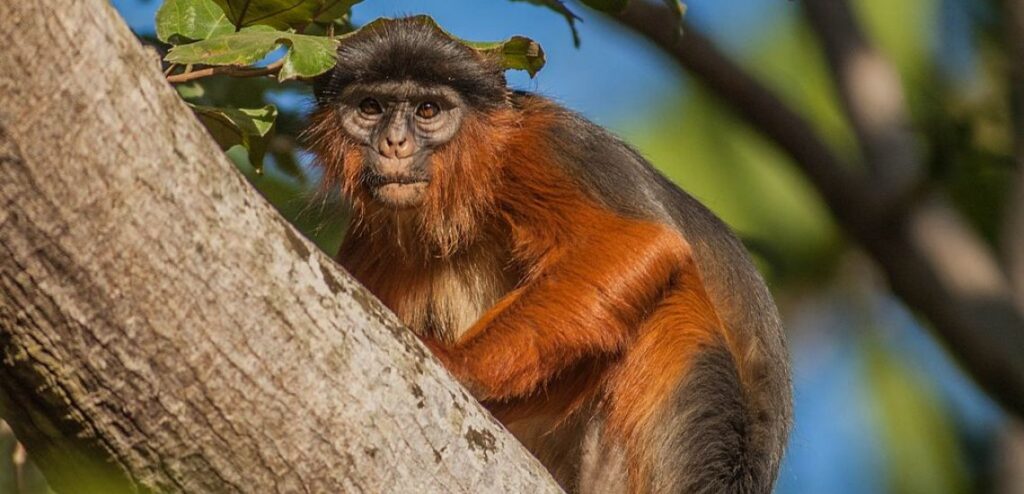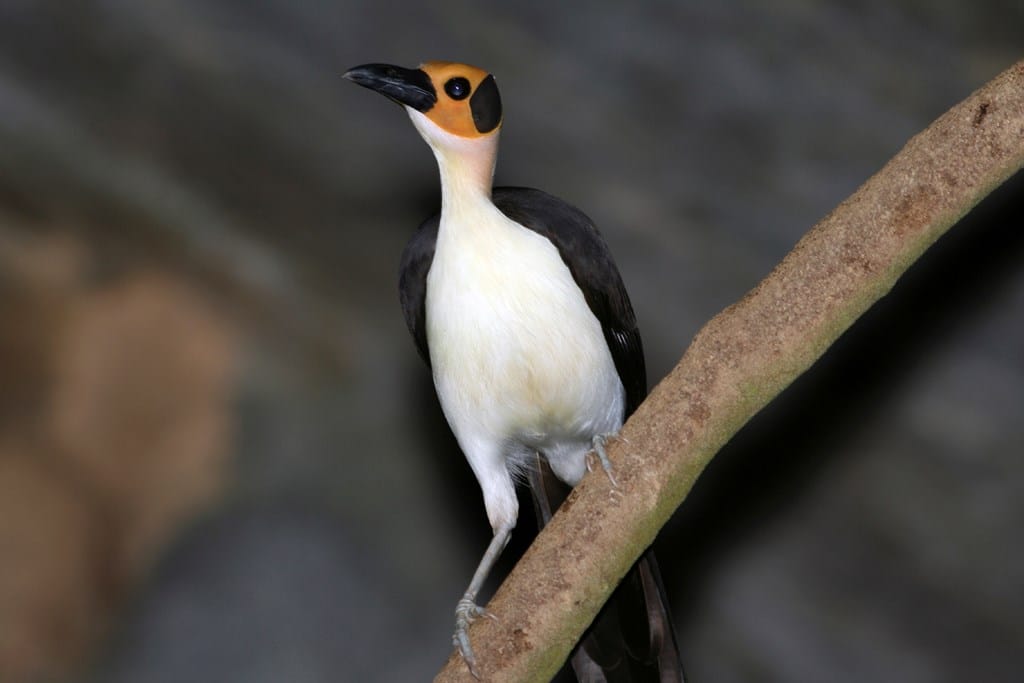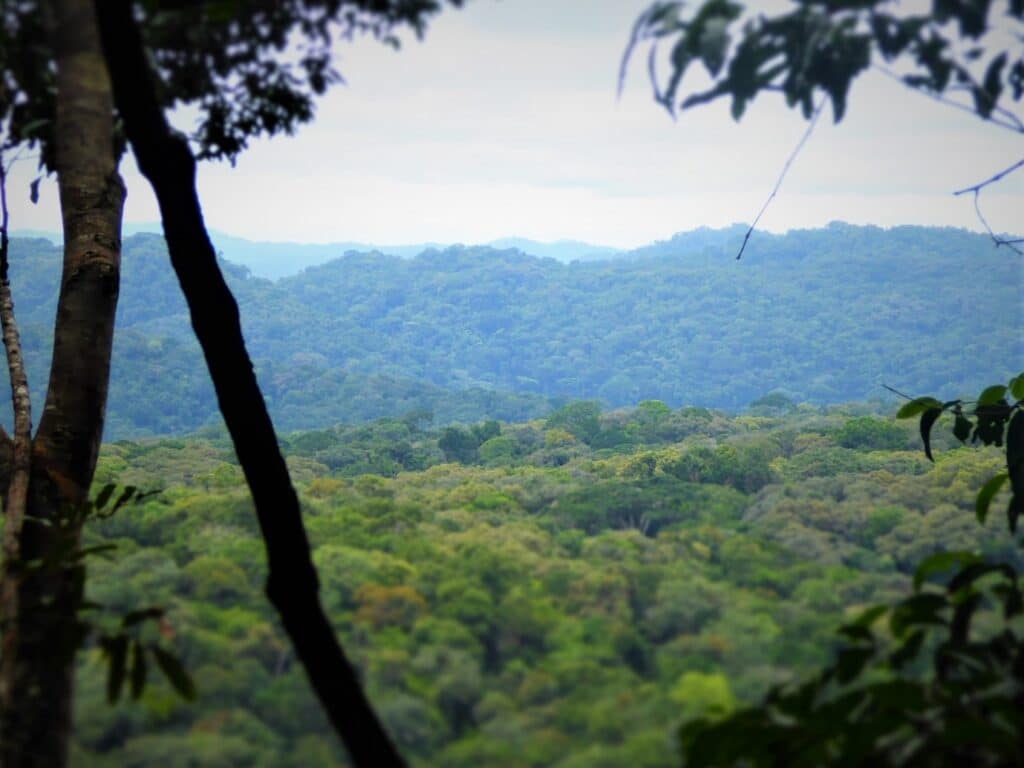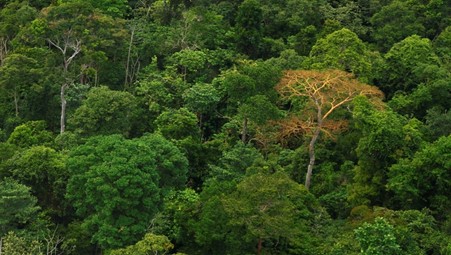Saving the Gola Forest: reimagining forest conservation in West Africa

In Sierra Leone and Liberia, a new forest conservation initiative is being implemented through a collaborative approach, to save one of West Africa’s few remaining tropical forests.
By Lewis Kihumba
Covering more than 350,000 hectares, straddling the Liberia and Sierra Leone borders, Gola Forest is the largest remaining block of Upper Guinean Forest. An important biodiversity hotspot, the forest is home to 49 mammal species, 327 bird species and 43 amphibian species, in addition to more than 200 species of tree. More than 60 globally threatened species including the Western Red Colobus monkey Piliocolobus badius (Endangered), Zebra Duiker Cephalophus zebra and Rufous Fishing-owl Scotopella ussheri (both Vulnerable) are found in Gola Forest. Furthermore, the forest is home to the world’s second largest population of the Western chimpanzees, as well as acting as an overall carbon sink and helping to reduce the impacts of climate change.
Years of deforestation and degradation, driven by logging, agriculture, armed conflict and mining, have led to the loss of globally important biodiversity and decreased resilience to climate change. This has significantly impacted local communities, who depend on the forest for their livelihoods. In 2011, the governments of Liberia and Sierra Leone signed a Memorandum of Understanding (MoU) on cooperation in the management, research, protection and conservation of the Gola Forest. In February 2020, an amended MoU was signed by both countries, reaffirming commitment to jointly manage the forest and protect its biodiversity.


In August 2020, the European Commission-funded Programme to Support the Conservation of Forest Ecosystems in West Africa (PAPFoR) was rolled out in Sierra Leone and Liberia to conserve the Gola forest. The three-year programme is implemented by BirdLife Partners the Society for the Conservation of Nature of Liberia (SCNL) and the Conservation Society of Sierra Leone, alongside the Gola Rainforest Conservation Limited by Guarantee, the Royal Society for the Protection of Birds (RSPB – BirdLife in the UK), and BirdLife International.
“The PAPFoR project is a catalyst that stands to boost the world of conservation of nature and biodiversity in two countries, as we are aware animals have no borders,” states James Mulbha, the PAPFoR Project coordinator at SCNL.
Working with local communities, national partner organizations and government agencies in Liberia and Sierra Leone, PAPFoR will support effective forest management across the Gola Landscape, in protected areas and community forests. A key aspect of this programme is the establishment of land use plans to support conservation efforts, including the development of a trans-boundary database and provision of Geographic Information System (GIS) training. Further, the programme will carry out a participatory landscape-wide land use planning process and support local communities to develop land use plans.
“This project is unique as it is a precursor for peace between communities spread across two countries. The Land Use Planning is not only a land management tool and a support for decision-making, but more importantly, a conflict management tool between communities sharing the same forest resources,” notes Babacar Gueye, Africa Forest Coordinator at BirdLife International.
“The PAPFoR project is a catalyst that stands to boost the world of conservation of nature and biodiversity in two countries, as we are aware animals have no borders”James Mulbha, the PAPFoR Project coordinator at SCNL
Secondly, the project will support the management of five protected areas within the landscape, through development of management and co-management plans. These protected areas include Gola Rainforest National Park, Kambui Forest Reserve, Tiwai Wildlife Sanctuary, Gola Forest National Park, and Foya Proposed Protected Area. Training and empowering individuals individuals to carry out forest management and conservation is a key component of PAPFoR. To this end, the programme will train community eco-guards and support the Governments of Liberia and Sierra Leone to carry out joint patrols, in addition to putting in place a landscape-wide bio-monitoring programme.
“The involvement of community members as eco-guards sets the basis for local people’s participation in the protection of the forest. This intervention has created income for community eco-guards, further reducing the pressure on the forest as many of them were previous hunters, miners, loggers and farmers,” adds Mulbha.
Another outcome of this programme is supporting sustainable community-based management of forest resources outside the protected areas while improving community livelihoods. To achieve this, the project will support two community-based ecotourism ventures and pilot a sustainable logging model in Liberia. It is envisaged that more than 50,000 people in 160 communities will benefit from this programme. Already the project has started to put its plan into action, including reaching out to local communities in the project area, training eco-guards, and introducing staff to land use planning.
“This can be a very effective approach in the management of this key resource in Africa”, concludes Gueye.
The EU PAPFoR Programme is supported by the European Commission

